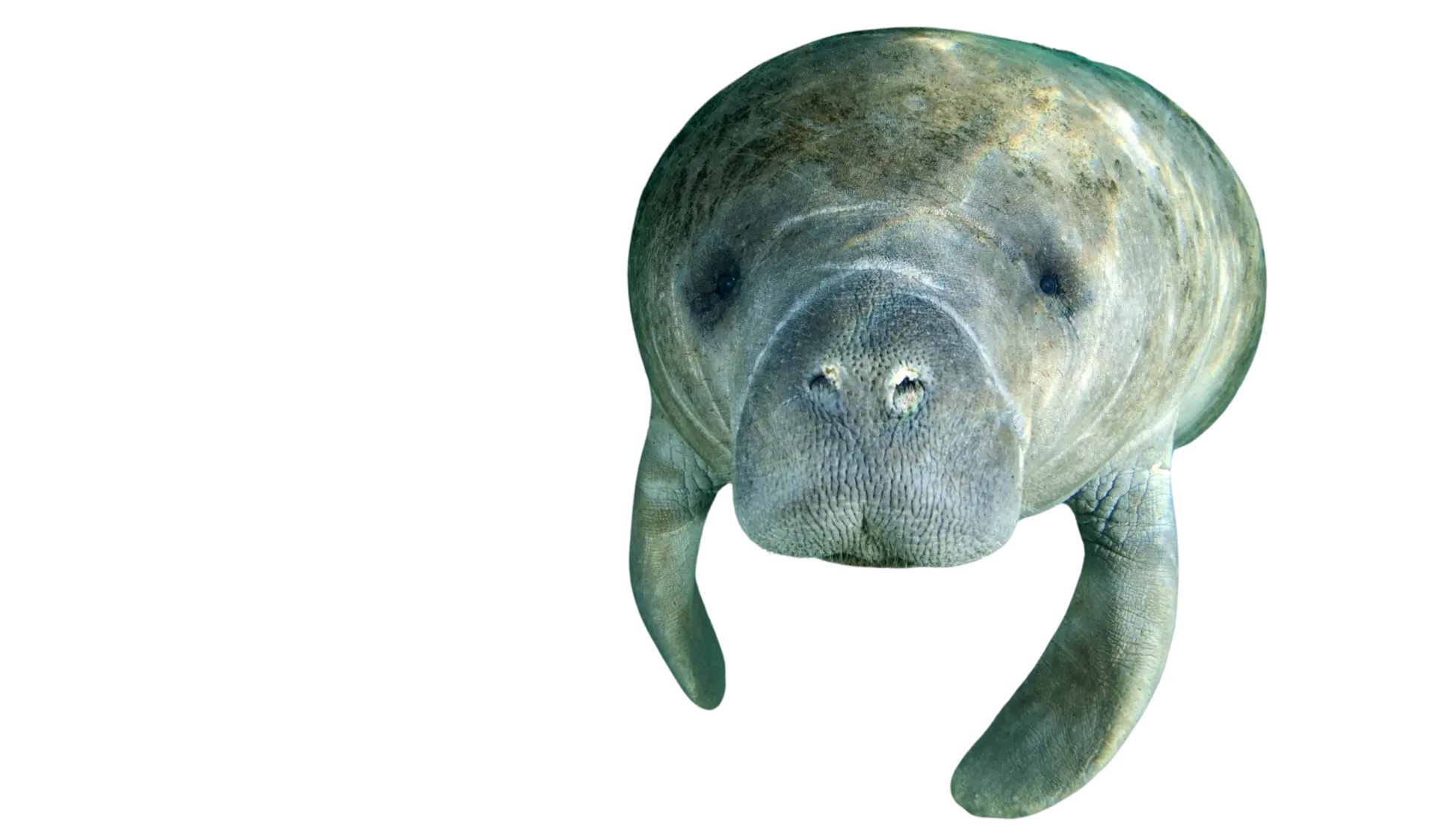January 2024
Galveston, Texas
I sat up in what felt like the middle of the night. The century old hotel room was dark, and the only sound came from the ticking of the fan above my head. As I stumbled toward the coffee maker, making every effort not to step on the creaky floorboards, I contemplated whether or not I was dreaming. I pulled on my sweatshirt and long johns and took a few sips of bitter coffee. All my life I dreamt of wolf watching and now, in the most unusual of places, I was heading out in hopes of finding one of the most elusive wolves in the world, the red wolf.
—–
In January of this year, I had the privilege of accompanying IWCN Founder and Executive Director, Suzanne Asha Stone on an eye-opening trip to a part of the country not commonly associated with wolves.
Galveston, Texas, a community of just over 50,000 residents is renowned for its warm gulf coast beaches, fantastic seafood, and of course its notorious hurricanes. However, one of the most incredibly unique features of the island is its wildlife, and more specifically, the “ghost wolves” that roam what remains of the coastal community’s wild spaces.
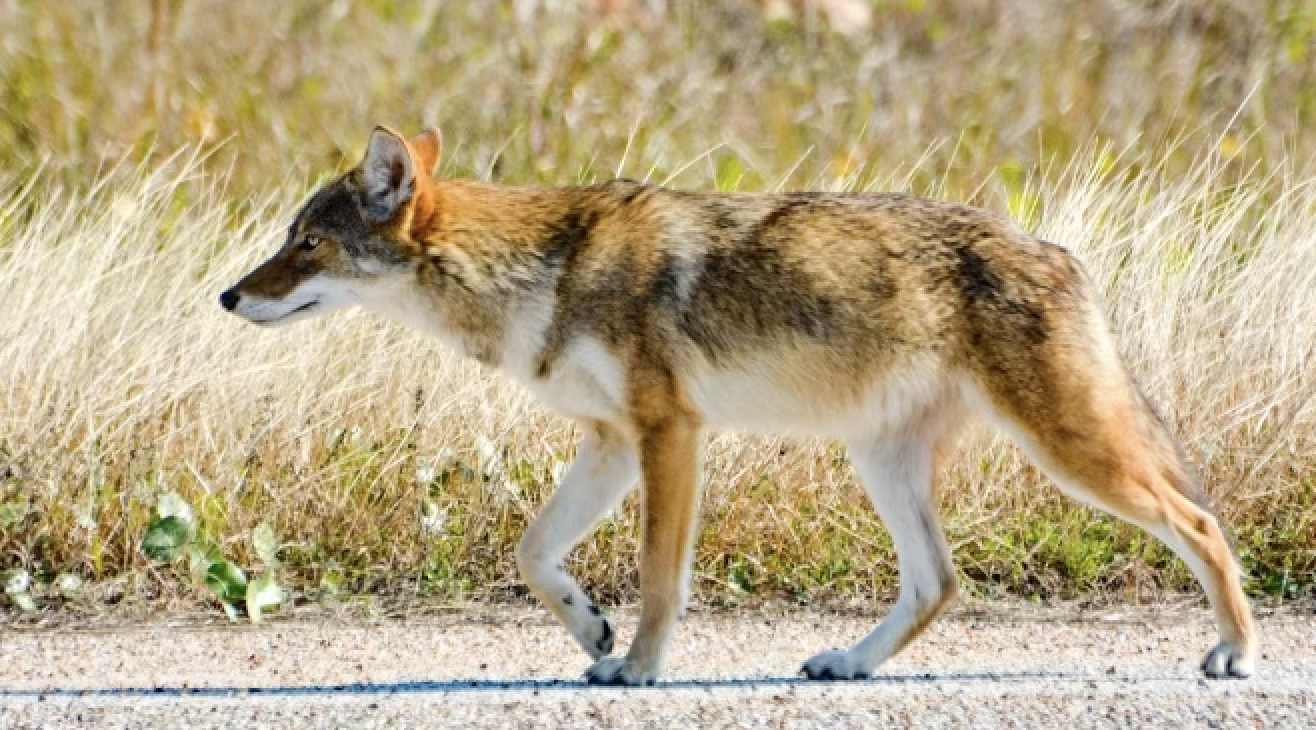
These unique canids, found only on the gulf coast of Texas and Louisiana, carry the DNA of the red wolf; a species once believed to be extinct and now existing only through a captive breeding recovery program along the East Coast of the United States. To say the discovery of red wolf DNA in the local Galveston coyote (aka – ghost wolf) population was exciting would be a gross understatement.
Local Galveston citizen scientist, Ron Wooten was the first to notice the variation in members of the coyote population on the island, prompting curiosity and excitement in the scientific community. This discovery inspired the establishment of the Gulf Coast Canine Project (GCCP) in 2018 to bring awareness and coexistence education to community members living with these “fancy coyotes”.
In January 2024, IWCN leadership joined representatives from the Texas Conservation Alliance, the Galveston Bay Foundation, Artist Boat – a local Galveston land conservation nonprofit, Galveston Island Humane Society, and GCCP researchers Dr. Kristin Brzeski from Michigan Tech and Dr. Bridgett vonHoldt of Princeton to conduct an interactive town hall meeting for the Galveston community. The purpose of the meeting was to provide updated research findings and answer questions swirling around this extremely rare canid.
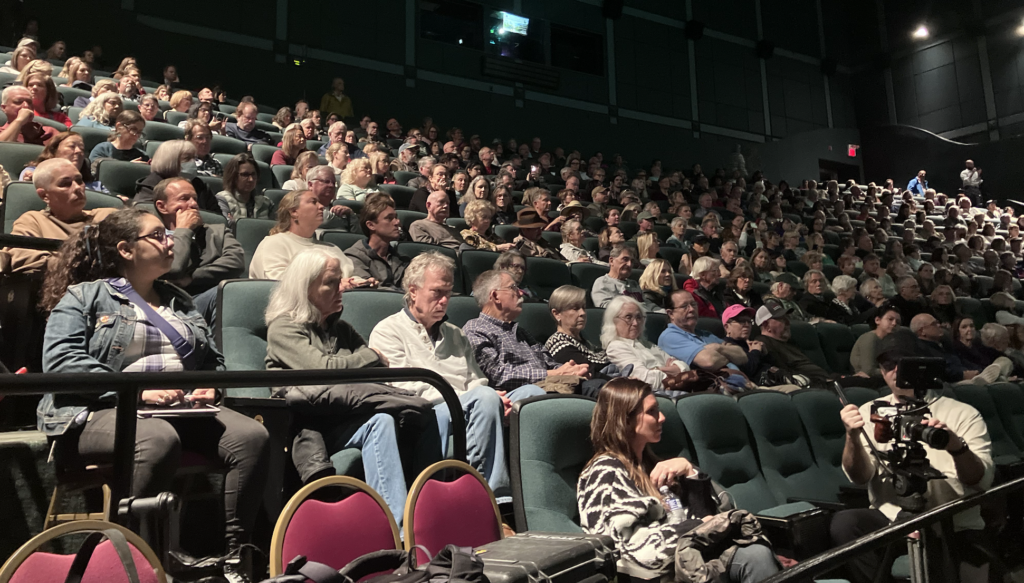 It was standing room only that evening, as the town hall registrations exceeded Moody Garden’s 400 seat amphitheater capacity. Presentations were made by the GCCP scientists, followed by simple and practical coexistence tips from the panel’s wildlife experts, and then moving pleas for engagement and action by local representatives – united in community pride after the hardships and resilience of past hurricanes. Galveston community members responded to the panel presentations with thoughtful questions about the preservation of their wildlife, wild lands, and especially their special ghost wolves. They also showed concern over a large development project slated to take place on the east end of the island, which is primary habitat for the ghost wolves.
It was standing room only that evening, as the town hall registrations exceeded Moody Garden’s 400 seat amphitheater capacity. Presentations were made by the GCCP scientists, followed by simple and practical coexistence tips from the panel’s wildlife experts, and then moving pleas for engagement and action by local representatives – united in community pride after the hardships and resilience of past hurricanes. Galveston community members responded to the panel presentations with thoughtful questions about the preservation of their wildlife, wild lands, and especially their special ghost wolves. They also showed concern over a large development project slated to take place on the east end of the island, which is primary habitat for the ghost wolves.
As a west-of-the-Rockies wolf advocate, I came to the town hall meeting dressed in hypothetical Teflon. I’ll admit that I was apprehensive of an open forum giving community members full access to scientists and land conservation activists. However, as the meeting began, I watched in awe as this community of South Texans gathered in support of biodiversity and coexistence. Their desire to understand all facets of the situation, instead of fearing the unknown, was clear as a bell. I was proud of the elite team of scientists and conservation leaders who helped to guide the conversation beautifully, answering insightful questions as well as a few hardballs in a manner that conveyed grace, understanding, shared concern, and realistic solutions.
To ensure the town hall meeting considered all points of view, representatives from the slated project developers out of Dallas (RREAF Holdings), were invited. Not only did they attend, but they were, and continue to be, receptive to the concerns of the citizens of Galveston, specifically regarding the environmental impact of their project.
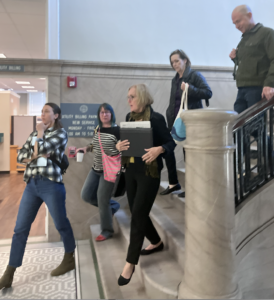
Earlier in the week, RREAF Holdings representatives met with the GCCP team and conveyed both a receptive and cooperative attitude toward the concerns and proposed wildlife coexistence strategies recommended for the development project. This specific large-scale project comes on the heels of ongoing environmentally insensitive development taking place across Galveston Island. Community members have witnessed their naturally beautiful home evolve into a landscape of hotels, parking lots, and short-term rental housing. Josh Henderson of the Galveston Island Humane Society said it best when he voiced his concern in a pre-town hall meeting.
“Nobody comes to Galveston for the concrete.”
An air of cooperation and forward-thinking strategizing took place between the researchers, the community members, and the project developers and it provided a haze of hope that hovered over the entire week’s events.
But that wasn’t all.
The GCCP team also attended a meeting with Galveston Mayor Craig Brown, who showed incredible support of the project’s goals to protect the ghost wolves of Galveston Island and the wildlands that they inhabit. The Mayor and the Ghost Wolf team discussed opportunities for current and future developments to implement proactive measures, ensuring safe and enjoyable experiences for the community members as well as the wildlife. Some of these measures include protected areas surrounding the proposed building sites, special glass to deter and reduce the number of migratory bird strikes, and a wildlife protection plan containing signage for residents and visitors as well as training for the staff on wildlife coexistence methods. The mayor also saw this as an opportunity for the RREAF Holdings developers to become front runners of future environmentally considerate projects in Galveston, promoting good-will with the locals and noting the importance of both economic growth coupled with land preservation. Galveston citizens depend on tourism as a primary revenue source, but without its natural beauty, some of the appeal of the island diminishes. The wildlife and wild lands – the marshes and beaches – are the lynchpin of what makes the island so unique.
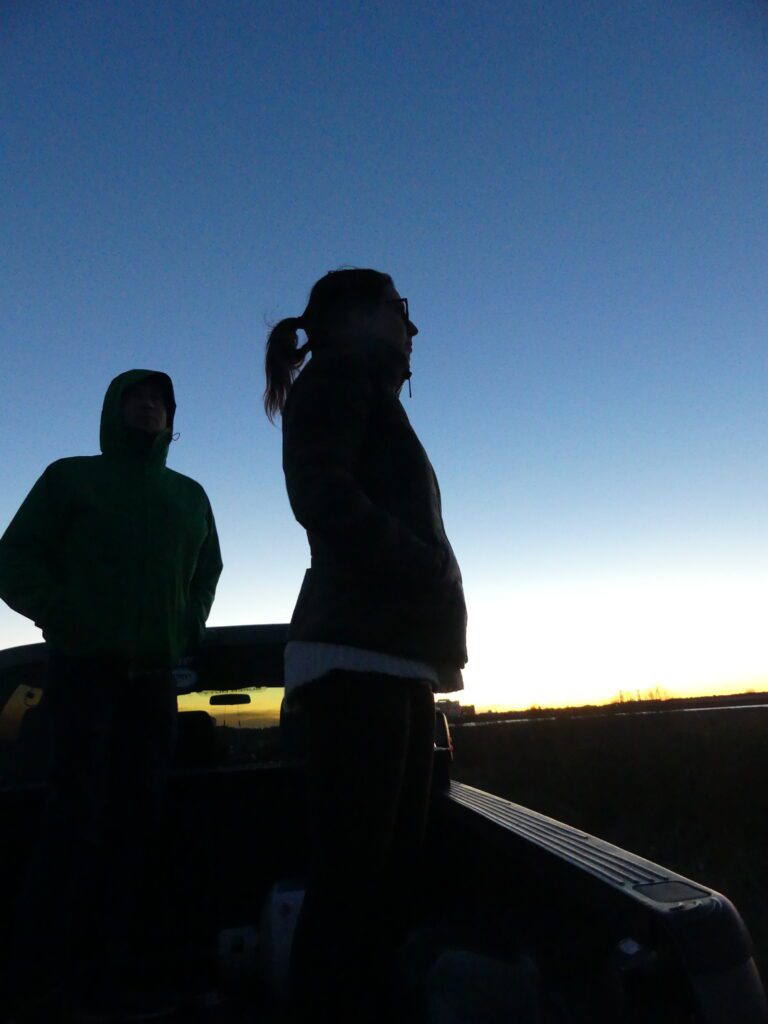
Which brings me back to my bleary-eyed morning. Predawn scientific expeditions are common with this team, but I was trying to get up to speed. Lacking much of anything besides a can-do attitude, a sense of adventure, and sheer delirium, I made my way down the historic hotel stairs, coffee cup in hand, to the rental car with Suzanne. We drove in quiet excitement out to the home of the ghost wolves. As we approached the landscape where the canids were known to inhabit, we slowed the car down. And just like that, before sunrise on the morning of January 12th, four red “ghost” wolves crossed the road in front of us. Their movements, reflecting their given name, were simultaneously graceful and other worldly. As they made their way across the road and down into the cover of the marsh land, they paused to look at our car, just for a moment, just for an acknowledgement, just to make our hearts stop, and then they continued on out of our line of sight.
We sat as still as possible, windows down, staring into the thin pre-dawn light, barely breathing. The mosquitos had their way with our exposed skin and any flinch or swat might prevent a second sighting. But our ghost wolves did not show themselves again. Had we come a moment later, we would have missed them.
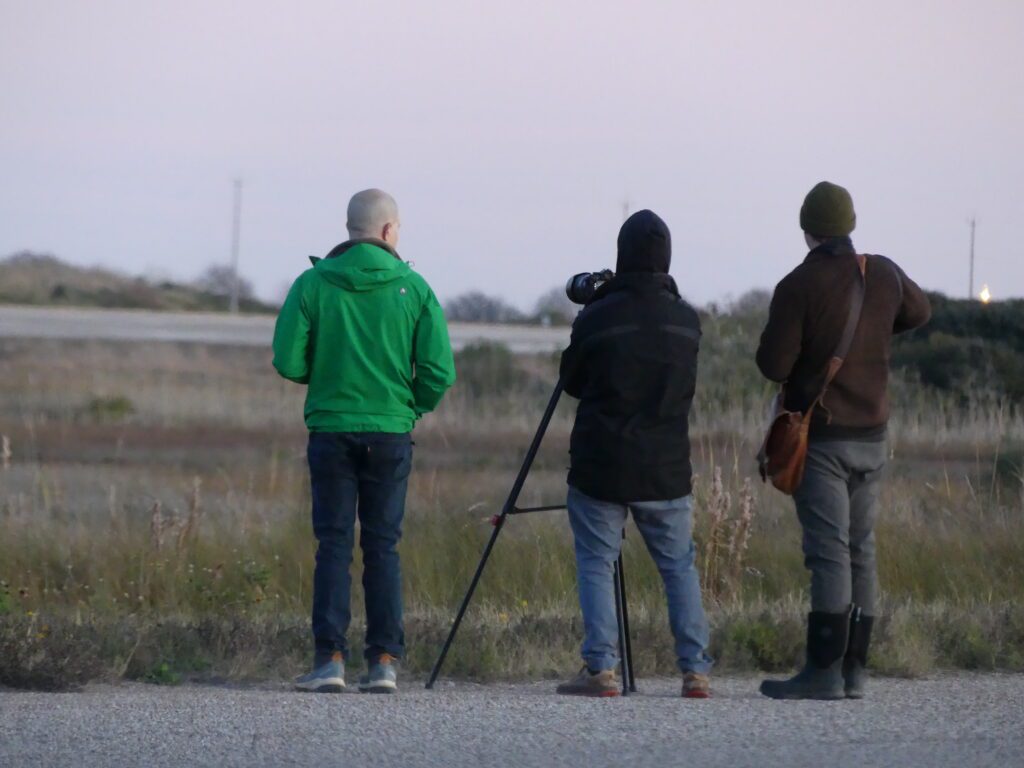
The ghost wolves of Galveston have attracted a national audience. Major publications, including the New York Times, have featured these elusive creatures in their stories, sparking a large interest in the research and recovery efforts taking place. To learn more about the Gulf Coast Canid Project visit http://www.gulfcoastcanineproject.org/

